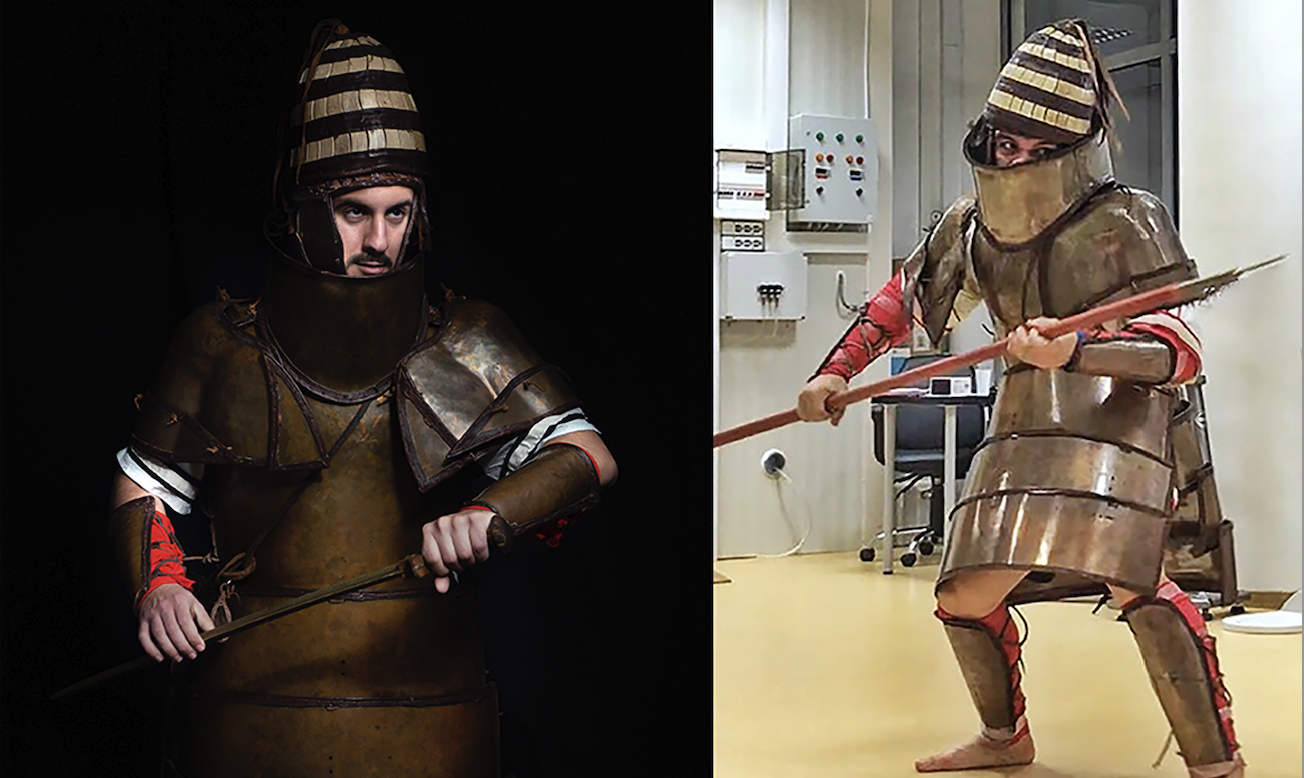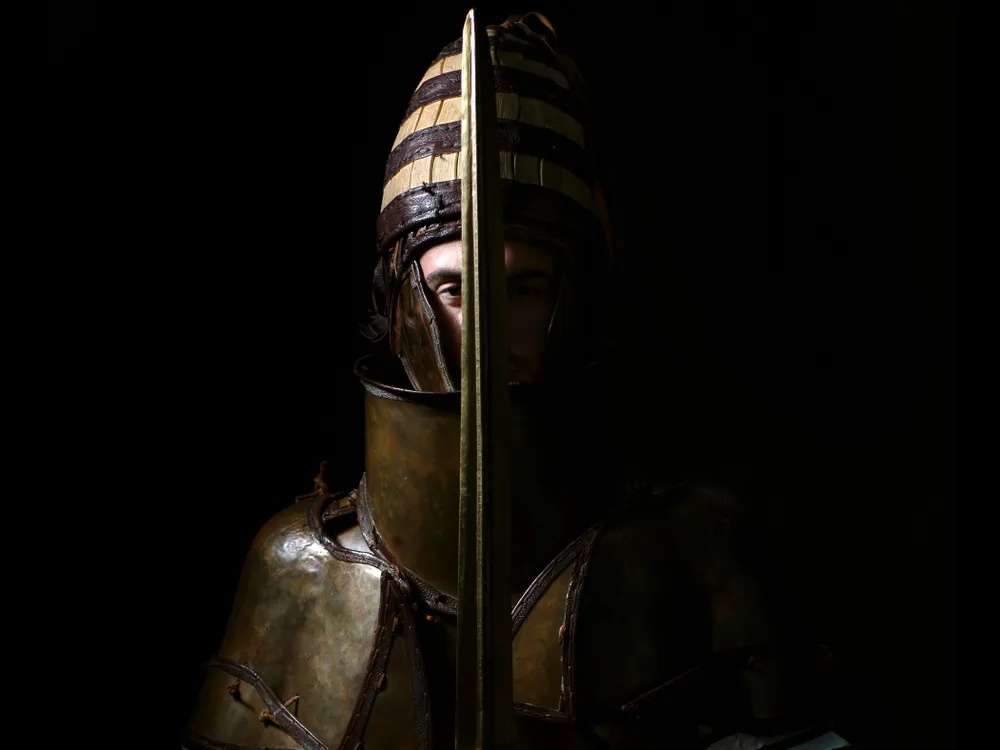
By Greek law, every male citizen over the age of eighteen must spend from nine months to a year in the Hellenic Armed Forces. As in every country with such a policy of mandatory conscription, this is surely not a prospect relished by most conscripts-to-be. But then, it can’t be all bad, at least for those enthusiasts of Mediterranean military history who happened to be serving when researchers from the University of Thessaly came by offering the chance to don a suit of armor from the fifteenth century BC and have a very — and faithfully — old-fashioned battle.
The replica was modeled on an example from the late-Bronze-age Mycenaean civilization “discovered in the southern Greek village of Dendra in 1960,” writes Smithsonian.com’s Sonja Anderson, describing it as “one of the oldest complete suits of European armor in existence.”
Composed of fifteen “copper-alloy sheets held together with leather, which covered the wearer from neck to knees,” the suit is “complete with arm and leg guards and a helmet decorated with pieces of boar tusk.” Clunky though it may look, it stands as evidence that, as the researchers put it in their paper, the “Mycenaeans had such a powerful impact in Eastern Mediterranean at least partly as a result of their armor technology.”
But first, they had to put the armor itself to the test. “They gathered volunteers from the 32nd Marines Brigade of the Hellenic Army,” Anderson writes, “fed them the pre-battle meal of a Mycenaean soldier: bread, beef, goat cheese, green olives, onions and red wine. The marines were outfitted in replicas of the Mycenaean suit, given replicas of Mycenaean cruciform swords, and placed in a temperature-controlled room set to a geographically accurate 64 to 68 degrees Fahrenheit.” There commenced eleven hours of simulated battle, all “choreographed based on descriptions of the Trojan War from Homer’s Iliad, which was fought a few centuries after the Dendra armor was made.”

“We now understand, despite its cumbersome appearance at first sight, that it is not only flexible enough to permit almost every movement of a warrior on foot but also resilient enough to protect the wearer from most blows,” the researchers write in their conclusion. And though their research subjects “showed a high level of fatigue, sore upper body due to the weight of the armor, and foot pain due to walking, running, riding a chariot, and fighting barefoot,” it must have been a more stimulating experience than the average day in the Hellenic Armed Forces — especially if there was any post-battle goat cheese and wine available.
via Smithsonian Magazine
Related content:
What It’s Like to Actually Fight in Medieval Armor
How to Make and Wear Medieval Armor: An In-Depth Primer
How Well Can You Move in Medieval Armor?: Medievalist Daniel Jaquet Gives It a Try in Real Life
Bronze Age Britons Turned Bones of Dead Relatives into Musical Instruments & Ornaments
Based in Seoul, Colin Marshall writes and broadcasts on cities, language, and culture. His projects include the Substack newsletter Books on Cities and the book The Stateless City: a Walk through 21st-Century Los Angeles. Follow him on Twitter at @colinmarshall or on Facebook.


Leave a Reply